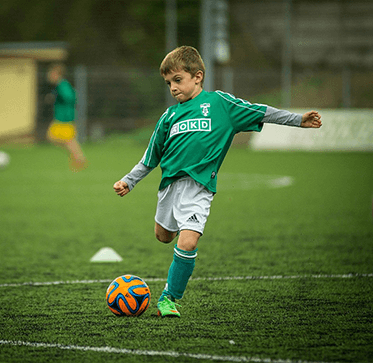CRFC BLOGS
LATEST BLOGS & NEWSLETTERS
Youth Soccer Kickoff Rules: A Comprehensive Guide for Coaches, Parents, and Players
When kids step onto the soccer field, they’re there to have fun and learn the game. The kickoff is one of the most essential parts of soccer for young players to understand. Kickoffs occur at the start of each half and after every goal. For youth soccer, these rules can vary slightly from adult soccer, and they are adjusted to help young players learn and develop their skills.
In this article, we’ll break down youth soccer kickoff rules, including critical updates, different age group regulations (like U10 soccer kickoff rules and U8 soccer kickoff rules), and what happens after a goal. Whether you’re a coach, a parent, or a young player, this guide will help you master the art of kickoffs in youth soccer.
Soccer Kickoff
A soccer kickoff is used to start the game and restart play after a goal is scored. It’s how every match begins and how the game resumes after halftime or after a team scores. The ball is placed in the center of the field on the center mark, and one player from the team takes the first kick. The kickoff aims to move the ball into play so the game can officially begin.
The Importance of Understanding Kickoff Rules for Youth Soccer
Kickoffs are more than just a simple way to start the game. They also teach young players essential aspects of soccer, such as teamwork, positioning, and the importance of following rules. Understanding youth soccer kickoff rules helps players know where they should be standing, how to pass the ball, and how to keep the game moving. When players know the rules well, it leads to a smoother game.
At the youth level, kickoffs are a chance for young players to get comfortable with handling pressure. Teaching kids how to take kickoffs properly is a great way to help them develop the confidence they’ll need throughout their soccer journey.
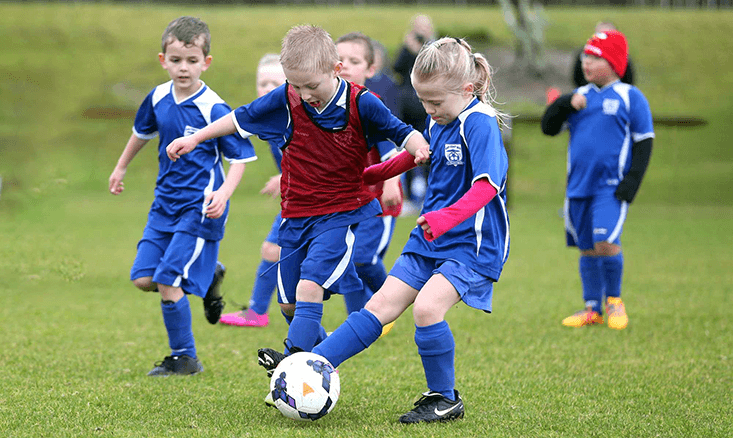
Standard Youth Soccer Kickoff Rules
The basic kickoff rules in youth soccer are quite similar to those of professional soccer. However, some adjustments are made depending on the age group to make the game easier for younger players.
Youth Soccer Kickoff Rules (General Guidelines)
Here are the core youth soccer kickoff rules that apply across most youth leagues:
- The ball must be placed in the center of the field and cannot move until the referee blows the whistle to start the play.
- The ball can now be kicked in any direction. Before 2016, the ball had to go forward, but a youth soccer kickoff rule change now allows the kicker to pass the ball in any direction.
- All players, except for the one taking the kickoff, must be in their half of the field.
- The opposing team’s players must stand a specific distance from the ball. In youth soccer, this distance is usually 8 to 10 yards, depending on the age group.
Once the ball is kicked, it’s officially in play, and the game begins. The kicker cannot touch the ball again until another player has touched it. If the kicker does touch it twice in a row, the other team will be awarded an indirect free kick.
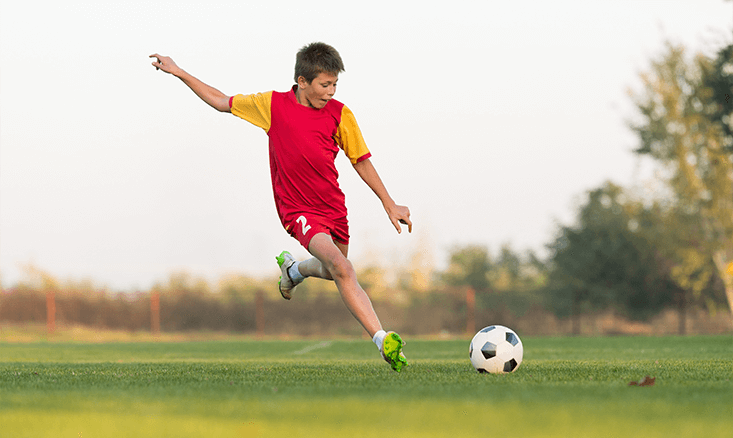
Kickoff Rules for U10 Youth Soccer Players
The kickoff rules are a bit more structured for players under 10.
According to U10 soccer kickoff rules, the opposing team’s players must stay 8 yards away from the center mark until the ball is kicked. This gives the kicker enough space to make a pass without feeling too much pressure from defenders.
Additionally, offsides are not typically enforced during kickoffs at this age level. This allows young players to focus on getting the game’s basics down without worrying about the more complex offside rule.
Kickoff Rules for U8 Youth Soccer Players
The kickoff rules are even more relaxed for children under eight, making the game fun and educational.
According to U8 soccer kickoff rules, opposing players might only need to stand 6 yards away from the ball during the kickoff. The idea is to give young players more room and reduce the pressure of having defenders nearby. The focus at this stage is more on learning the game than on strict rule enforcement. Coaches often use this time to teach kids about positioning and ball control.
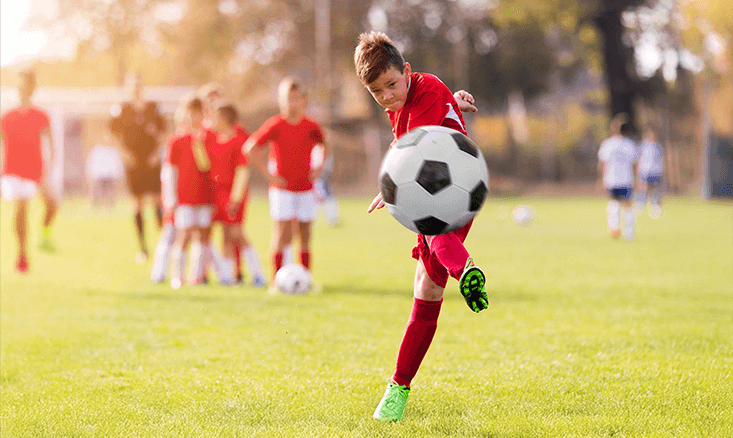
Kickoff Rules for U12 and Above Youth Soccer Players (Standard NFHS Soccer Kickoff Rules)
Once players reach U12 and older levels, the NFHS soccer kickoff rules (National Federation of State High School Associations) resemble the standard FIFA rules.
The ball can still be kicked in any direction, and all players except the kicker must remain in their half of the field. However, for older players, the opposing team’s players must stay at least 10 yards away from the ball. This rule aligns with FIFA’s regulations for adult soccer.
Teaching these more advanced soccer rules helps prepare young players for the entire game as they progress in their soccer careers.
Youth Soccer Kickoff Rules After a Goal
Youth Soccer Rules: Kickoff After a Goal
In youth soccer, once a team scores, the other team gets to restart the game with a kickoff after a goal. This rule is the same at all levels of soccer, from professional leagues to youth games.
The procedure for a kickoff after a goal is the same as for the initial kickoff at the start of the game. The team that conceded the goal places the ball in the center spot and kicks it to restart the game.
All players except the kicker must be in their half of the field, and the opposing players must maintain the required distance (8-10 yards, depending on the age group).
Special Considerations for Youth Soccer Kickoff After a Goal
In youth soccer, coaches often focus on quick restarts to help players stay engaged. For young players, restarting after a goal can feel like a high-pressure situation, especially if they’re trying to recover from conceding a goal.
Coaches can use this opportunity to teach players how to stay calm, focus on the basics, and keep playing no matter the score. Kickoffs after a goal offer an excellent chance to build resilience and teamwork.
Conclusion
Understanding youth soccer kickoff rules is vital to young players’ game learning. Whether you’re following the U10 or U8 soccer kickoff rules or learning about the 2016 youth soccer kickoff rule change, knowing the basics will help players feel more confident on the field. By mastering these rules, young players will be better prepared for success as they grow in their soccer careers.
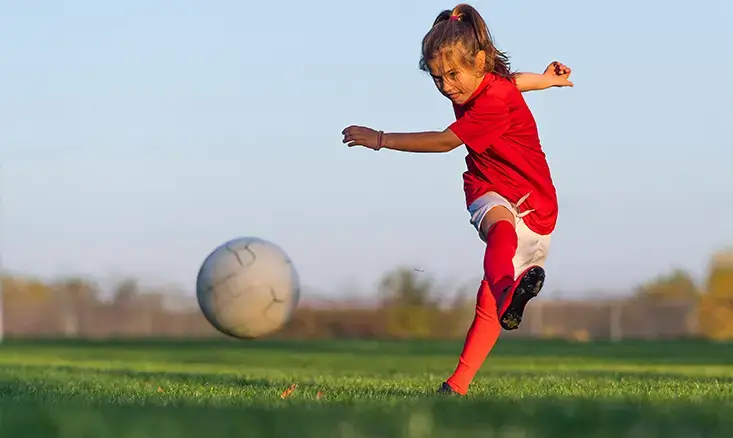
FAQs
What happens if a kickoff is taken incorrectly in youth soccer?
If a kickoff is taken incorrectly (for example, if the ball doesn’t move or the kicker touches it twice), the referee will usually stop play and ask the players to retake it. In youth soccer, referees are generally more lenient and focus on teaching rather than punishing mistakes.
Can a player score directly from a kickoff in youth soccer?
Yes! According to youth soccer kickoff rules, a player can score directly from a kickoff. As long as the ball is kicked correctly and enters the opposing team’s goal, it counts as a legal goal.
Are there different kickoff rules for U10 and U8 soccer?
Yes, there are slight differences. U10 soccer kickoff rules require opposing players to stay 8 yards away, while U8 soccer kickoff rules might only require a 6-yard distance. These adjustments help younger players focus on learning the game without feeling too much pressure from defenders.
What is the 2016 kickoff rule change?
The youth soccer kickoff rule change from 2016 allows the ball to be kicked in any direction, not just forward. This update gives players more options for starting play and helps teams make more brilliant passes.
How far must opposing players stand during a kickoff in youth soccer?
In U10 soccer, opponents must stand 8 yards away from the ball. In U8 soccer, they may only need to be 6 yards away. For older players (U12 and above), the NFHS soccer kickoff rules require a 10-yard distance.

Did you find this useful?


